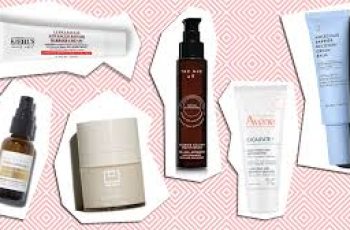
How to remove blackheads on nose?
We all know that we shouldn’t squeeze blackheads on our noses, but that doesn’t mean we stop squeezing those pesky blemishes vigorously. Yes, it can cause serious skin problems, but that will never eliminate the temptation.
Therefore, we have compiled useful tips and tricks for you to use at home on how to remove blackheads on nose.
Why do we get blackheads?
Blackheads are caused by the accumulation of dirt, excess oil, bacteria, and debris, which clog the pores and then oxidize, causing the impurity heads to turn black, hence the name “blackheads”. They are different from other papules and whiteheads because the pores remain open and do not get clogged and form small pustules.
Blackheads are relatively easy to remove, and there are various treatment and prevention methods. Keep in mind that it takes about 20 to 40 days for blackheads to reappear. This means that you can’t get rid of them permanently, but you can definitely maintain the clarity of your skin.
How to remove blackheads on nose permanently?
As mentioned before, the chances of permanently removing blackheads on nose are slim, but you can ensure that your nose is blackhead-free most of the time. Here are some proven methods to remove blackheads on nose.
Using a Clay Mask
Clay masks are extremely beneficial for oily and acne-prone skin types. They draw impurities out of the pores that can cause pimples and blackheads. Try using a clay mask once a week and you’ll notice a noticeable difference with fewer blackheads and less sebum production. Don’t forget to cleanse your skin beforehand to remove any makeup residue or bacteria, and use a facial scrub to remove any dead skin cells that have built up on your skin, which can prevent the clay mask from clearing clogged pores.
Using a Scrub on Your Skin
When it comes to exfoliation, you have two options: Physical exfoliants are facial scrubs or tools that you have to physically work into your skin to loosen up debris or dirt on the surface of your skin. Chemical peels come in liquid form and are commonly called AHAs and BHAs. They work by soaking a cotton pad and rubbing it on your face, allowing facial acids to break down dead skin cells bound to your face and buff away any bacteria or dirt. Regardless of which exfoliator you choose, both exfoliants will remove dirt buildup and other skin blockers, keeping your skin clearer for longer.
Try Retinoids
You have undoubtedly heard of or are aware of retinoids. Despite the rather lengthy caveats, they are clinically proven to be the most effective at clearing blemishes and soothing blemish-prone skin by speeding up skin exfoliation. For more information on retinol, check out our blog post on the skincare benefits of retinol and how to use it. When you use retinol consistently for up to 12 weeks, you will really see an amazing change in your skin.
Book an appointment for a professional extraction or facial
If the previously mentioned methods are too time-consuming for you, it is best to book an appointment for a professional treatment, whether it is an extraction or a chemical peel.
With a professional treatment, you can rest assured that the aesthetician has a wealth of knowledge and years of training and practice to know how to best unclog pores without damaging the skin. When it comes to chemical peels, the facial acids used are medical-grade and very effective, meaning you will see results much faster than with at-home products.
Change your daily habits and makeup
If you want to remove blackheads on your nose, it is not ideal to avoid using products that contain oils or have a thick, creamy texture. These products are too greasy for the skin and can clog pores. When it comes to makeup and skincare, switch to lightweight, oil-free products that give your skin the care and coverage it needs without causing unwanted breakouts.
What are ceramides and how do they work?
Ceramide, you may have heard the term before and vaguely thought it was a powerful anti-aging ingredient. If not, then you’ve come to the right place, as we’re going to clarify a few things about ceramides and the effects they actually have on your skin.
What are ceramides?
Ceramides make up about 50% of the skin’s epidermis, making them extremely important molecules for the overall appearance of your complexion. They are a class of fatty acids, also known as lipids, that occur naturally in the skin. They allow the skin to retain moisture, keeping its appearance firm and plump while maintaining the full functionality of the protective barrier. In other words, ceramides are essential for keeping you looking youthful and protected from environmental influences. The levels of these ceramides in the skin begin to decline, with production decreasing significantly after the age of 30. That’s why the skincare industry has developed a huge love for these skin-repairing powerhouses, and you’ll no doubt find ceramides in the formulas of your favorite skincare products.
What do ceramides do for your skin?
Ceramides are like glue, they hold everything together and ensure everything works properly. By holding healthy skin cells together, the protective barrier remains intact and able to withstand all the stresses the skin is subjected to every day. From pollution, UV rays and harsh elements, all of which damage the skin, to free radicals deposited on the face and causing a host of issues such as fine lines and wrinkles, uneven skin texture, pigmentation and blemishes.
Fast facts on the benefits of using ceramides in your skin care routine:
Your skin naturally produces ceramides, which decrease with age or sun damage.
Ceramides ensure that the skin looks youthful, feels firm and that the skin’s protective barrier functions properly.
Topical application of ceramide-rich skincare can help keep ceramide levels high in the skin.
Pollution, UV rays, weather, central heating and more are all environmental aggressors that can damage the skin’s protective barrier.
Whether natural or synthetic, the skin loves ceramides and benefits from their continued presence in everyday life, whether applied topically in a nourishing moisturizer or in a diet rich in soy, eggs, wheat germ, brown rice, and supplements. Just make sure you understand oral ceramide supplements to avoid affecting your cholesterol levels. Always consult your primary care physician before taking any new supplements.
Do Skincare Products with Ceramides Really Work?
You may have questions about the efficacy of ceramide skincare products and whether they really work. Since ceramides are naturally produced in the skin, you may feel that using skincare products with these substances may be a waste of time, energy, and money. It is important to remember that as we age, our skin’s natural ceramide levels decrease, and a healthy, plump, elastic complexion is replaced by a dry, dull complexion with all the signs of aging. This is where ceramide-infused skincare comes into play to maintain the glue that holds skin cells and the skin barrier together.
How to Use Ceramides?
Not only will using ceramide products keep levels up and give your skin a vibrant, radiant glow, you may also want to know that certain types of ceramides in skincare can boost the natural production of ceramides. So you’ll definitely want to add them to your routine soon. While it may be tempting to slather ceramides on your skin at every step of your skincare routine, it’s better to use serums and moisturizers because you can leave them on longer to allow the ingredients to absorb into your skin compared to cleansers. Apply these serums and moisturizers morning and night to let the ceramides work their magic. You can also apply them to your hair, lips, and body.
Are there any side effects to using ceramides?
Since ceramides occur naturally in the skin, this generally means they are safe to use with few known side effects. You can also introduce them into your routine along with other skincare ingredients like glycerin to create a powerful combination with skin-repairing effects. Other ingredients like AHAs and BHAs can also be used safely with ceramides, mainly because they each work on different layers of the skin, so there’s no sign of any power struggle.
As with any skin care product you haven’t used before, it’s recommended that you consult with your primary care physician or dermatologist 24 hours in advance and do a patch test.
Hopefully now you have a better understanding of what ceramides are and what they do for your skin. Luckily for all of us, they are the perfect ingredient to incorporate into our daily lives. Your skin will thank you for it. You might even say you’ve discovered the fountain of youth, and that’s considering it’s been right there in your shoes the whole time!
I know the beauty industry can seem like a very confusing place at times, with a constant stream of new ingredients to learn about, must-have products to try, or buzzwords to understand. Remember, everyone’s skin is different, and you may find that your friend’s daily regimen doesn’t help your skin at all. The best thing you can do is understand your skin better and the rest will make more sense. If you’d like to learn more, you can read our blog post on knowing your skin type as well as a complete guide to the 4 most common skin types.


